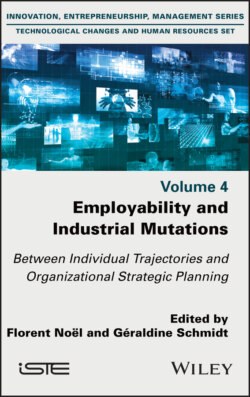Читать книгу Employability and Industrial Mutations - Группа авторов - Страница 16
1
Employability and Public Policy: A Century-long Learning Process and Unfinished Process
ОглавлениеUnderstood as the ability to obtain and keep a “normal” job, that is, one that is not protected, employability is a century-old term that is being used more and more widely. It finds a natural field of application in the context of job renewal: rather than protecting a worker in a job, it is advisable to develop his or her professional capacity to adapt to future jobs, his or her employability.
For a long time, it was a concept developed and used by social and health practitioners confronted with the differentiated care of the unemployed: social workers, placement office agents, administrative authorities, doctors, trainers and so on. Researchers or specialists in an academically recognized discipline such as economics, sociology, education sciences or human resources management, came to grips with it later, and extended it to all categories of active workers, whether in employment or not.
However, the term remains controversial. The public debate seems to oscillate between fuzzy acceptance and virulent rejection. In the field of public policy, the term employability is indeed fraught with concrete issues and also with collective potentially stigmatizing or reproachful, representations. Using it often means focusing attention on individual aptitudes and motivations, seeming to exonerate the other actors in the labor market, and in particular companies, from any responsibility for access to employment or job quality (Orianne and Conter 2007). Actors and institutions that use the notion of employability can also, and even more simply, be accused of endorsing a market representation of human capacities to the detriment of the integrity and autonomy of individuals.
But the context of the early 2020s, with the health crisis and its repercussions on the economy and employment, as well as the increasingly pressing challenges of the environment, provides renewed justification for using the term employability. Indeed, the necessary adaptation should take place with important changes in the nature and requirements of the available jobs, just think of the development of “green” jobs or the expected rise of the electric car. The challenges of massive reconversions are emerging, and the development of employability, which has been at the heart of projects and practices to secure professional careers for the past 20 years, is becoming a crucial imperative. But what kind of employability can and should we be talking about?
Based on a series of works carried out during the 1980s and 1990s (Gazier 1990; Gazier 1999) and extended more recently (Bruggeman et al. 2012; Gazier 2017), this contribution will proceed in two stages. First, it will focus on the major operational versions of employability that have been developed for more than a hundred years in the field of public policies dealing with unemployment in developed countries. Second, it will discuss the current meaning of employability, showing how, faced with the demands of operationality, a series of works and developments in practices are beginning to give it the meaning of a collective construction.
